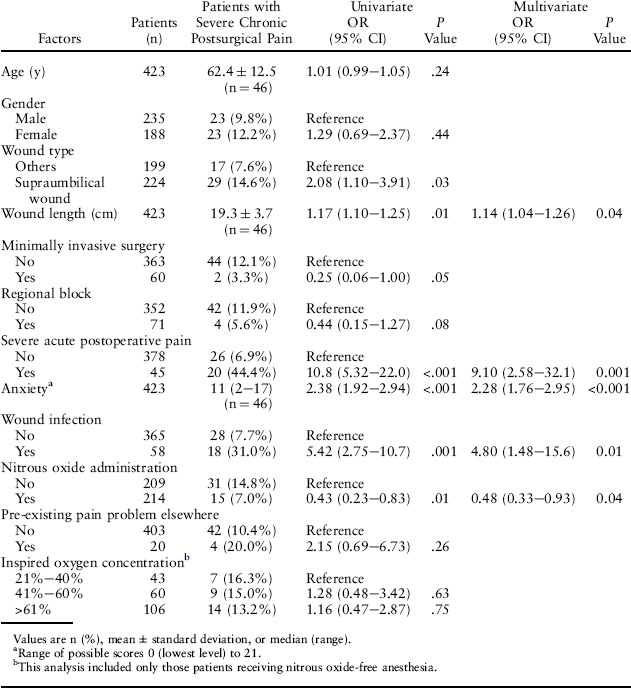Pain Management
Chronic Pain Management
Chronic postsurgical pain after nitrous oxide anesthesia
Chan MTV, Wan ACM, Gin T, et al (Chinese Univ of Hong Kong, Shatin, NT; et al) Pain 152:2514-2520, 2011§
Evidence Ranking
• B
Expert Rating
• 2
Abstract
Using a structured telephone interview, we contacted all ENIGMA trial patients recruited in Hong Kong (n = 640). We recorded the severity of postsurgical pain of at least 3 months’ duration that was not due to disease recurrence or a pre-existing pain syndrome, using the modified Brief Pain Inventory. The impact of postsurgical pain on quality of life was also measured. Pain intensity, opioid and other analgesic requirements during the first week of surgery, were retrieved from the trial case report form and medical records. A total of 46 (10.9%) patients reported pain that persisted from the index surgery, and 39 (9.2%) patients had severe pain. In addition, patients with chronic pain rated poorly in all attributes of the quality-of-life measures compared with those who were pain free. In a multivariate analysis, nitrous oxide decreased the risk of chronic postsurgical pain. In addition, severe pain in the first postoperative week, wound complication, and abdominal incision increased the risk of chronic pain. In conclusion, chronic postsurgical pain was common after major surgery in the ENIGMA trial. Intraoperative nitrous oxide administration was associated with a reduced risk of chronic postsurgical pain (Table 6).

Full access? Get Clinical Tree




